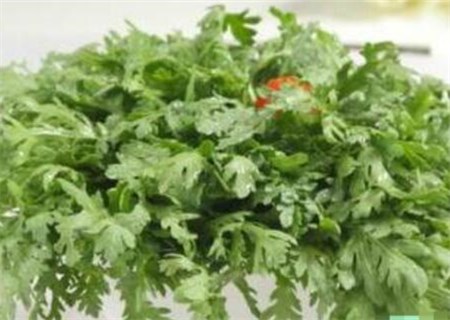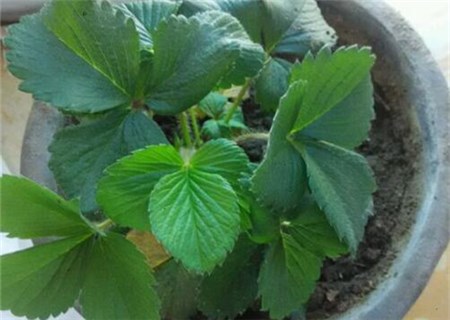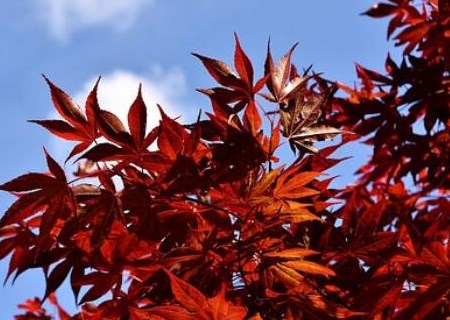How to control diseases and insect pests of Artemisia annua (also known as chrysanthemum cauliflower)? What are the efficacy and nutritional value? Who is not suitable?
The flower of Artemisia angustifolia is very similar to wild chrysanthemum, so it is also known as chrysanthemum. It has a long history and is widely distributed in China, so do you know how to control diseases and insect pests in the process of cultivation? What are the efficacy and nutritional value? Which people are not fit to eat? According to traditional Chinese medicine records, chrysanthemum chrysanthemum is edible for the general population. It is suitable for patients with hypertension, mental workers, anemia, fracture patients and so on. However, because of the spicy aroma of Artemisia annua, those with stomach deficiency and diarrhea should not eat more.

I. how to control diseases and insect pests of Artemisia annua L.
1. Blight
Symptoms: most of them occurred in the middle and later stages of seedling cultivation. It mainly harms the stem base or underground root of the seedlings, which is oval or irregular dark brown disease spot at first, wilts in the early day, recovers at night, the disease part gradually sinks and overflows, and some gradually changes to dark brown, when the disease spot expands around the stem for a week. Finally withered and died, but did not lodge. The mildly diseased plants only saw brown sunken disease spots and did not die. When the seedbed humidity is high, the light brown arachnoid mold can be seen in the disease department.
Prevention and treatment: at the initial stage of the disease, 38% cuproloxil 800x solution, or 41% poly (pyrimidine) 600x solution, or 20% methyl ibuprofen EC 1200 times, or 72.2% Prik water agent 800x solution, once every 7 days. Or the general + door god diluted by 600 times the liquid, 3 liters per square meter before sowing or after sowing and before planting. At the time of planting or after planting and before the expected disease occurrence period, the product was diluted with 600 times solution and irrigated with roots, and the drug was used once every 7 days, depending on the disease.
2. Leaf spot
Symptoms: cockscomb leaf spot infects leaves, petioles and stems, the disease spot is round on the leaf, and then expands to show irregular large disease spot, and produce wheel pattern, the disease spot changes from reddish brown to dark brown in the center, brown on stem and petiole, long strip. There are small black-brown round spots on the leaves of fish-tail sunflower leaf spot, and then enlarged or the disease spots show irregular large patches, the edge is slightly raised, and there are small black spots on both sides of the leaves. Cymbidium leaf spot (there are oval, long, light reddish brown disease spots on the leaves, there are green circles around, and then expand into large irregular patches, and black spots are produced on the disease spots.
Prevention and treatment: at the initial stage of the disease, 4% pyrimidine nucleoside antibiotics 20 ml + 41% polypyrimidine 20 ml, mixed with water 15 kg of water, 5-7 days once, 2-3 times.
3. Sclerotinia disease
Symptoms: mainly damage to stems, leaves and fruits. The base of the stem was infected with primary watery spots, and then expanded into light brown, resulting in soft rot or longitudinal crack of the stem base, and white cotton-like mycelium appeared on the surface of the diseased part. When the leaf is infected, there are gray to grayish brown wet rot spots on the leaf surface, and the boundary between the disease spot edge and the healthy part is not obvious. when the humidity is high, flocculent white mold appears on the spot surface, which eventually leads to leaf rot. The fruit was infected with water-soaked spots at first and wet rot after enlargement, showing dense white cotton-like mycelium, and black mouse fecal sclerotia appeared on the surface of the disease in the later stage of the disease.
Prevention and treatment: in the middle and early stages of the disease, the prevention and treatment of 20% silazomide 30 ml + carbendazim 25 ml, mixed with water 15 kg of water, 5-7 days once, 2-3 times.
4. Vegetable borer
Symptoms: the first instar larvae eat the heart leaves of the seedlings, spitting silk and forming a net, which will affect the growth of the seedlings, and the severe ones can cause the seedlings to die, resulting in lack of seedlings and ridge. in addition to eating the heart leaves, the older larvae can also eat the stem pith and roots, and can spread bacterial soft rot, causing vegetable plants to rot and die.
Prevention and treatment: during the peak incubation period of the larvae or when the heart leaves are killed and there is a screen, spray 4000 times of Yitaibao EC for 2-3 times, and pay attention to spraying the medicine on the heart of cabbage.
5. Aphids
Symptoms: aphids are pests of piercing and sucking mouthparts, often clustered in leaves, tender stems, flower buds, terminal buds, etc., pricking and sucking juice, causing leaves to wrinkle, curl and deform, and in serious cases cause branches and leaves to wither or even the whole plant to die.
Control: when the number of 100 aphids in the field reaches 500 and the benefit-damage ratio is more than 1 ∶ 500, spray 50 ml of 25% aphid mite clear EC per mu, or 1500g 2000 times of imidacloprid series products, 60-70g of 10% aphid lice, 2500 times of 20% imidacloprid, and 25% 3000 times of aldicarb. The wheat aphid resistant to imidacloprid and acetamiprid should not be used alone, but could be sprayed reasonably with low toxic organophosphorus pesticides.
What is the efficacy and nutritional value of Artemisia angustifolia
Efficacy
Artemisia annua has the effects of regulating stomach, invigorating spleen, reducing blood pressure and tonifying brain. Often eat chrysanthemum, cough phlegm, spleen and stomach disharmony, memory loss, habitual constipation have a better effect. When chrysanthemum chrysanthemum is fried with meat and eggs, the absorption rate of vitamin A can be improved. Stir-fry Artemisia annua, mixed with sesame oil, monosodium glutamate, refined salt, light and delicious, most suitable for patients with coronary heart disease and hypertension.
nutritive value
Each 100g contains 95.8g water, 0.8g protein, 0.3g fat, 1.9g carbohydrate, 0.6g crude fiber, 0.9g ash, carotene 0.28mg, vitamin B10.01 mg, vitamin B20.03 mg, nicotinic acid 0.2mg, vitamin C2 mg, calcium 33mg, phosphorus 18mg, iron 0.8mg, potassium 207mg, sodium 172mg, magnesium 19.6mg, chlorine 240mg. It also contains serine, aspartate, threonine, alanine and so on.
Time: 2019-03-17 Click:
- Prev

What are the planting methods of patchouli seeds in Labiatae? What is the effect and effect? What are the side effects?
Patchouli, also known as Hexiang, Cangao, mountain fennel, etc., belongs to the lip-shaped order, Labiatae perennial herbs, with edible and medicinal value, widely cultivated in China. So do you know what are the planting methods of patchouli seeds? What is the effect and effect? What are the side effects? Seed planting method of patchouli
- Next

What are the planting methods of Japanese red maple bonsai in the disease-free family? Will the leaves fall in winter?
Japanese red maple is a small tree or shrub of the genus Acer in the disease-free family. There are many varieties of horticulture, with a variety of leaf colors, tree shapes and leaf shapes, and are widely cultivated in many places in the world. So do you know the planting methods of Japanese red maple bonsai? Will the leaves fall in winter? Planting method of Japanese red maple bonsai
Related
- Fuxing push coffee new agricultural production and marketing class: lack of small-scale processing plants
- Jujube rice field leisure farm deep ploughing Yilan for five years to create a space for organic food and play
- Nongyu Farm-A trial of organic papaya for brave women with advanced technology
- Four points for attention in the prevention and control of diseases and insect pests of edible fungi
- How to add nutrient solution to Edible Fungi
- Is there any good way to control edible fungus mites?
- Open Inoculation Technology of Edible Fungi
- Is there any clever way to use fertilizer for edible fungus in winter?
- What agents are used to kill the pathogens of edible fungi in the mushroom shed?
- Rapid drying of Edible Fungi

